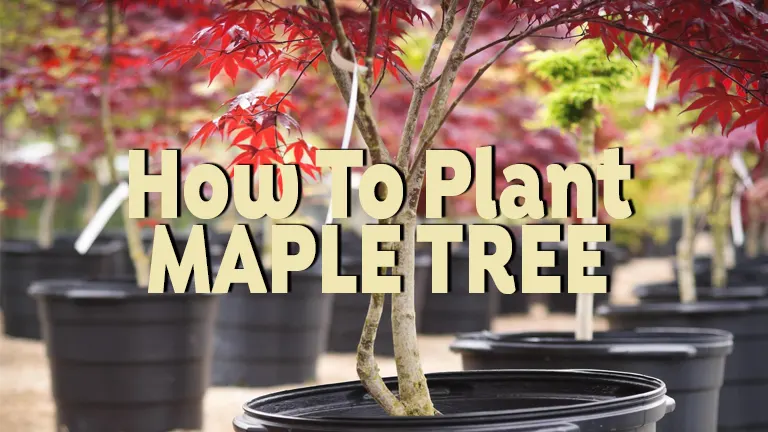
How you can Plant Maple Tree supplies an in depth walkthrough for gardeners and landscapers aiming so as to add the fantastic thing about maple bushes to their areas. Identified for his or her hanging autumn hues and resilience, maple bushes, together with varieties just like the grand Sugar Maple and the elegant Japanese Maple, demand particular planting methods for optimum well being and progress. This information outlines the important steps, from choosing the appropriate location to caring for the tree post-planting, making certain your maple thrives and enhances your panorama with its vibrant colours and strong nature.
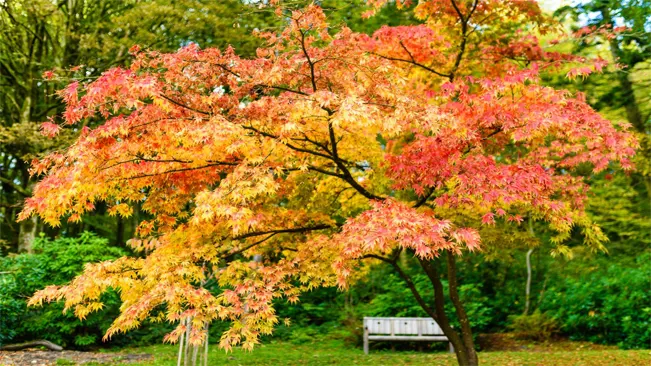

Maple Tree Advantages
| Profit | Description |
|---|---|
| Aesthetic Enchantment | Maple bushes are identified for his or her beautiful fall foliage, starting from vibrant yellows to deep reds, including magnificence and seasonal curiosity to landscapes. |
| Shade and Cooling | Their broad cover supplies ample shade, lowering temperatures and creating snug outside areas. This will additionally result in power financial savings in properties throughout summer time. |
| Air High quality Enchancment | Like all bushes, maples play a job in air purification by absorbing pollution and emitting oxygen, contributing to cleaner air. |
| Wildlife Habitat | Maple bushes present habitat and meals for numerous wildlife, together with birds and small mammals. Their flowers and seeds are significantly useful. |
| Carbon Sequestration | They assist fight local weather change by absorbing carbon dioxide from the ambiance, storing carbon of their wooden, and lowering the general carbon footprint. |
| Soil Erosion Management | The foundation techniques of maple bushes assist stabilize soil and forestall erosion, particularly in sloped areas. |
| Elevated Property Worth | Bushes, together with maples, can improve the general worth of a property as a consequence of their aesthetic and environmental advantages. |
| Maple Syrup Manufacturing | Some species, just like the Sugar Maple, may be tapped for sap, which is boiled down to supply maple syrup, a well-liked and pure sweetener. |
| Instructional Alternatives | Maple bushes can be utilized as instructional instruments to show about nature, biology, and environmental stewardship, particularly throughout occasions like maple syrup harvesting. |
| Biodiversity Preservation | By planting native maple species, gardeners and landscapers contribute to the preservation of native biodiversity and ecological steadiness. |
Listing on How To Plant Maple Tree
Selecting the Proper Location
Maple bushes thrive in well-drained soil with ample daylight. Keep away from planting close to buildings or different bushes as maples want house to develop. Contemplate the mature measurement of your maple to keep away from future points.
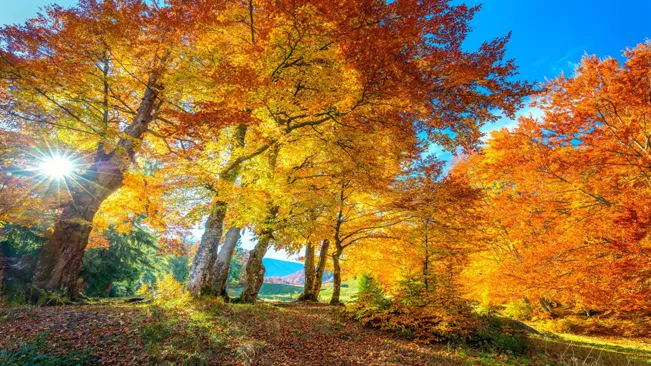

- Understanding Soil Necessities
- Effectively-Drained Soil: Maple bushes want soil that enables water to percolate via with out waterlogging. Extra moisture can result in root rot, a standard difficulty in maple bushes. You’ll be able to enhance drainage by amending the soil with natural matter.
- Soil pH: Most maple species want barely acidic to impartial pH ranges. It’s useful to check the soil pH earlier than planting and modify it if needed utilizing soil amendments.
- Daylight Publicity
- Daylight Wants: Maple bushes typically thrive in full solar to partial shade. They want a minimum of 4-6 hours of direct daylight every day. Nevertheless, some varieties, like Japanese Maples, want some afternoon shade to guard their leaves from scorching.
- Seasonal Issues: In areas with sizzling summers, some shade within the afternoon can stop leaf burn, particularly in youthful bushes.
- Spacing and Location
- Area Issues: Maples can develop fairly massive, so it’s essential to plant them the place they’ve sufficient room to develop. This contains house each above floor for branches and under floor for roots.
- Proximity to Buildings: Keep away from planting maple bushes too near buildings, sidewalks, or driveways. Their roots may be invasive and will trigger injury to foundations or pavements.
- Progress and Mature Dimension: Contemplate the mature top and unfold of the maple selection you select. Bigger species just like the Sugar Maple want extra space, whereas smaller varieties just like the Japanese Maple are appropriate for smaller yards.
- Environmental Influence
- Wind and Storm Resistance: Whereas many maple bushes are sturdy, some varieties may be vulnerable to breakage in excessive winds or ice storms. Planting them in sheltered areas can decrease injury.
- Microclimate Issues: Each backyard has microclimates. Areas close to south-facing partitions could also be hotter, which might have an effect on the expansion and well being of the maple.
- Future Progress and Landscaping Plans
- Lengthy-Time period Planning: Take into consideration how the tree will match into your panorama because it grows. Will it block views? Will it complement different plantings?
- Compatibility with Different Crops: Maples have intensive root techniques that may compete with different crops for vitamins and water. Guarantee different close by crops or garden areas are appropriate with this.
Getting ready the Web site
Earlier than planting, check the soil pH; maples want barely acidic to impartial soil. Clear the realm of weeds and particles. Dig a gap twice the width of the foundation ball and simply as deep. Combine some natural compost with the eliminated soil to offer vitamins.
- Testing Soil pH
- Significance: Maple bushes want barely acidic to impartial soil (pH between 5.5 and seven.5). The proper pH is essential for nutrient uptake.
- How you can Check: You need to use a easy soil pH testing equipment out there at backyard facilities. This includes taking a soil pattern and both utilizing a check strip or a liquid that adjustments coloration primarily based on the pH.
- Clearing the Space
- Goal: Eradicating weeds and particles ensures that your maple tree received’t need to compete for vitamins and water.
- Suggestions: Clear a beneficiant space round the place you propose to plant. This helps stop injury from mowers or trimmers and reduces competitors from grass and weeds.
- Digging the Gap
- Dimension: The opening ought to be twice as large as the foundation ball of your maple sapling however solely as deep. This measurement encourages the roots to unfold out horizontally and establishes a stable basis.
- Method: Hold the dug-up soil close by as you’ll want it to fill the opening. The edges of the opening ought to be a bit tough, not clean, to encourage roots to penetrate into the encircling soil.
- Enhancing the Soil
- Natural Compost: Mixing natural compost with the excavated soil improves its fertility and construction. Compost supplies important vitamins and improves soil aeration and water retention.
- Proportion: A superb rule of thumb is to combine about 1/3 compost with 2/3 of the native soil. This ratio ensures that the tree steadily adapts to the native soil as its roots develop past the amended soil.
- Issues for Heavy Clay or Sandy Soils
- Clay Soils: They will retain an excessive amount of water, resulting in root rot. Amend with compost and think about raised planting to enhance drainage.
- Sandy Soils: They drain shortly and won’t maintain sufficient water. Improve with natural matter to extend water retention.
- Last Touches
- Earlier than Planting: Water the opening frivolously. This prepares the soil and supplies a moist setting for the roots.
- After Planting: Don’t tamp the soil too firmly as it will possibly compact it and cut back aeration.
Planting the Tree
Rigorously take away the maple from its container. Gently loosen the roots and place the tree within the middle of the opening. Be certain that the highest of the foundation ball is degree with the encircling soil. Fill the opening with the soil-compost combine, tamping down gently to take away air pockets.
Eradicating the Maple from Its Container
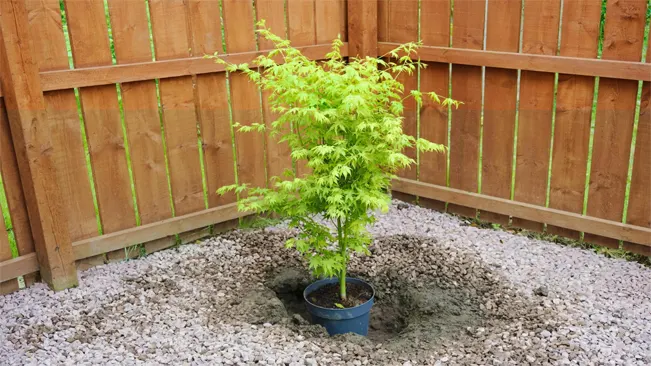

- Watch out throughout this course of as tough dealing with can injury the roots. If the tree is in a plastic container, gently tip it sideways and faucet the underside and sides to loosen the soil.
- If the tree is balled and burlapped (wrapped in burlap), place the tree subsequent to the opening, after which gently take away the burlap and any wires. It’s important to maintain the foundation ball intact.
Loosening the Roots
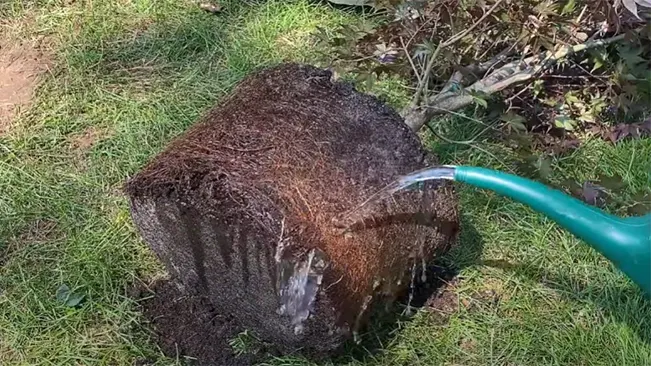

- This step is essential, particularly if the tree is pot-bound with roots circling the within of the pot.
- Gently tease the outer roots away from the foundation ball to encourage them to develop outward into the encircling soil.
- Watch out to not break the bigger roots, as this could hurt the tree.
Positioning the Tree


- Place the tree within the middle of the opening. The tree ought to be upright and straight.
- It’s vital to make sure that the highest of the foundation ball is degree with the encircling soil. Planting the tree too deep can result in root rot and different issues, whereas planting it too excessive can expose roots and dry them out.
Filling the Gap
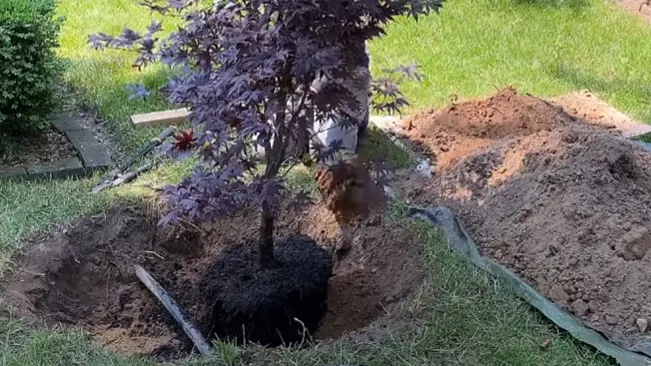

- Refill the opening with the soil-compost combine you ready earlier. This combine ought to present a steadiness of vitamins and enhance soil construction.
- As you fill, gently tamp down the soil to get rid of air pockets, which might dry out roots and hinder root progress.
- Keep away from compacting the soil too firmly, as this could make it laborious for roots to penetrate and for water to permeate.
Last Changes
- As soon as the opening is stuffed, create a small mound or a basin across the base of the tree. This helps to direct water in direction of the roots.
- Be certain that the tree continues to be standing straight and make any needed changes earlier than the ultimate tamping.
Watering
Water the tree generously after planting to settle the soil across the roots. Proceed to water the tree deeply as soon as per week, permitting the soil to dry out between waterings. Keep away from over-watering as it will possibly result in root rot.
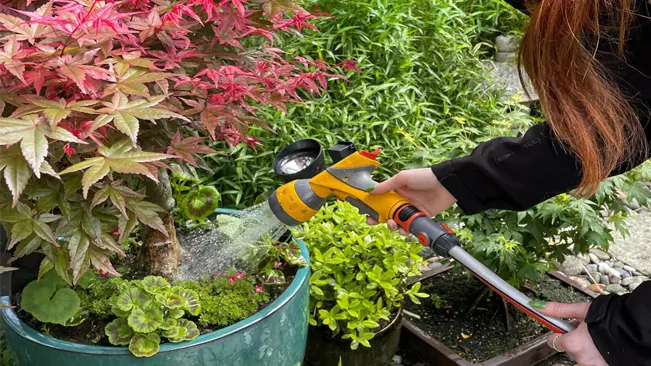

Preliminary Watering After Planting
- Significance of Preliminary Watering: Proper after planting, it’s important to water the maple tree generously. This preliminary watering helps to settle the soil across the roots and eliminates air pockets, which might hinder root progress.
- Methodology: Use a sluggish and regular watering technique, like a drip hose or a watering can, to make sure that water penetrates deeply into the soil, reaching your complete root zone.
Common Watering Schedule
- Frequency: After the preliminary watering, set up a daily watering schedule. For the primary few weeks, water the tree deeply as soon as per week. The purpose is to encourage the roots to develop deeper into the soil, which promotes higher drought tolerance in the long term.
- How you can Water: When watering, purpose to moisten the soil to a depth of a minimum of 6 to 12 inches. This depth ensures that the water reaches the deeper roots. Keep away from shallow watering, because it encourages roots to remain close to the soil floor, making them extra weak to drying out.
- Checking Moisture Degree: Earlier than every watering, examine the soil moisture. The soil ought to be allowed to dry out considerably between waterings. You’ll be able to examine the moisture degree by inserting a finger or a soil moisture meter into the soil. If the highest 2-3 inches of soil are dry, it’s time to water once more.
Avoiding Over-Watering
- Dangers of Over-Watering: Over-watering is a standard mistake and may be extra dangerous than under-watering. It may possibly result in poor oxygenation of the roots, root rot, and fungal ailments.
- Indicators of Over-Watering: Yellowing leaves, wilting, and a soggy soil base are indicators of over-watering. In case you discover these indicators, cut back the frequency of watering and let the soil dry out extra between watering periods.
Adjusting for Climate and Seasons
- Seasonal Changes: Throughout sizzling, dry summer time months, your maple tree may have extra frequent watering. In distinction, throughout cooler months or wet seasons, cut back the frequency of watering.
- Climate Issues: Take note of the climate in your space. If it has rained just lately, you may skip the scheduled watering, and vice versa.
Mulching and Fertilizing
Apply a layer of mulch across the base of the tree to retain moisture and regulate soil temperature. Hold the mulch just a few inches away from the trunk to stop rot. Fertilize the tree within the spring with a balanced, slow-release fertilizer.
Mulching
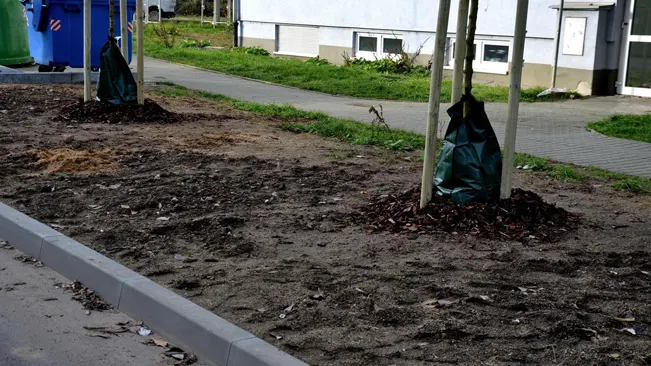

- Function: Mulch serves a number of key features in tree care. It helps retain soil moisture, which is crucial for the tree’s hydration, particularly in hotter months. Mulch additionally helps regulate soil temperature, holding roots cooler in summer time and hotter in winter.
- Materials Alternative: Natural mulches like wooden chips, bark, or compost are generally used. These supplies steadily break down, including vitamins to the soil and enhancing its construction.
- Software: When mulching, unfold a 2-4 inch layer across the base of the tree. It’s essential to keep away from piling mulch straight towards the tree trunk as this could trigger moisture to build up towards the bark, resulting in rot or illness.
- Upkeep: Mulch ought to be checked and replenished yearly to take care of an sufficient layer. Because it decomposes, it is going to must be topped as much as proceed offering advantages.
Fertilizing
- Function: Fertilizing supplies important vitamins which may not be sufficiently out there within the soil. For maple bushes, this promotes wholesome progress and vigor.
- Sort of Fertilizer: A balanced, slow-release fertilizer is beneficial. The sort of fertilizer releases vitamins steadily, offering a gradual provide over time. The time period “balanced” refers to an equal or harmonious proportion of important vitamins, sometimes nitrogen, phosphorus, and potassium.
- Timing: The most effective time to fertilize is in early spring, simply because the tree begins a brand new progress cycle. Fertilizing presently ensures that the tree has entry to vitamins throughout its most lively rising interval.
- Software Methodology: The fertilizer ought to be utilized across the drip line of the tree, which is the realm straight beneath the outer circumference of the tree branches. Keep away from making use of fertilizer too near the trunk.
- Monitoring: Observe the tree’s response to fertilization. Indicators of excellent well being embrace strong leaf progress, vibrant coloration, and a robust construction. Over-fertilizing may be dangerous, so it’s vital to observe product directions and never exceed beneficial quantities.
Staking (If Obligatory)
In case your maple is younger and fragile, stake it to offer assist. Drive a stake into the bottom subsequent to the tree and loosely tie the tree to the stake. Take away the stake after one or two years.


Why Stake a Maple Tree?
- Help: Younger bushes, particularly these with tall, slender trunks or these planted in windy areas, may have further assist to stop leaning or bending.
- Root Institution: Staking helps the tree set up its root system by lowering trunk motion. That is essential for the tree’s long-term well being and stability.
- Safety: In areas with heavy foot site visitors or garden tools, staking can present a visible reminder that there’s a younger tree to watch out round.
How you can Correctly Stake a Maple Tree
- Stake Choice: Select stakes which can be sturdy and tall sufficient to assist the tree. Sometimes, a stake ought to be about one-third to half the peak of the tree.
- Positioning the Stake: Drive the stake into the bottom about 15 to 18 inches from the tree’s base. Watch out to not injury the foundation system.
- Tying the Tree: Use a broad, versatile materials like a tree staking strap or smooth rope. Keep away from wire or something that may lower into the tree’s bark. Tie the tree loosely to the stake, permitting some motion. This motion is vital for the tree to develop a robust trunk and root system.
- Peak of Tying: The tie ought to be positioned about two-thirds up the peak of the tree. This supplies stability whereas permitting some flexibility.
Monitoring and Upkeep
- Common Checks: Test the ties periodically to make sure they’re not too tight, which might constrict the trunk and hinder progress.
- Changes: Because the tree grows, chances are you’ll want to regulate or transfer the ties to stop injury.
- Removing of Stakes: Most bushes want staking for just one to 2 years. After this, the tree ought to be robust sufficient to assist itself. Retaining stakes for too lengthy can result in a weaker trunk, because the tree depends on the stake fairly than creating its personal energy.
Warning
- Not All Bushes Want Staking: Solely stake a tree if it’s needed. If the tree is steady and in a protected space, it won’t want staking in any respect.
- Keep away from Injury: When staking, be conscious to not injury the trunk or roots of the tree. Damaging the bark can result in illness and pest issues.
Ongoing Care
Prune your maple throughout dormancy to take away useless or crossing branches. Monitor for pests and ailments and deal with as needed. With correct care, your maple tree will develop robust and supply magnificence for years to return.
Pruning


- When to Prune: Maple bushes ought to be pruned throughout their dormant season, which is usually in late winter or early spring. This timing avoids sap loss and reduces the chance of pest invasion or illness an infection.
- Goal: The primary objectives of pruning are to take care of the tree’s form, take away broken or diseased branches, and forestall branches from crossing or rubbing towards one another, which might trigger wounds and make the tree weak to ailments.
- Method: Use clear, sharp instruments. Make cuts at a 45-degree angle, a few quarter-inch above a bud going through the surface of the tree. This encourages progress away from the middle of the tree. Keep away from topping the tree, as this could result in poor progress and tree well being.
Pest and Illness Administration
- Frequent Pests: Aphids, scale bugs, and mites are frequent pests that may have an effect on maple bushes. These bugs can sap energy from the tree and result in sooty mould.
- Ailments: Maples are vulnerable to ailments like Verticillium wilt, tar spot, and numerous fungal infections. Signs embrace discolored leaves, cankers, or a common decline in tree well being.
- Administration: Common monitoring is essential. If pests or ailments are detected, determine the precise difficulty and deal with it accordingly. This may embrace mechanical elimination, pruning, or the appliance of applicable fungicides or pesticides. In some instances, particularly for severe ailments, consulting an expert arborist is beneficial.
Conclusion
In conclusion, planting a maple tree requires cautious web site choice, correct soil preparation, and attentive planting methods to make sure wholesome progress. Common upkeep, together with watering, pruning, and monitoring for pests and ailments, is essential for the tree’s long-term well being and vibrancy. By following these tips, a maple tree can change into a powerful and enduring addition to any panorama, providing environmental advantages and aesthetic pleasure for years to return.
FAQs (Regularly Requested Questions)
- What’s the greatest time of 12 months to plant a maple tree?
- Maple bushes are greatest planted in early spring or fall, when the climate is cooler and the bushes are dormant or coming into dormancy.
- How a lot daylight does a maple tree want?
- Most maple bushes require full to partial daylight, that means a minimum of 4-6 hours of direct daylight per day.
- How typically ought to I water a newly planted maple tree?
- Water newly planted maples deeply as soon as per week, permitting the soil to dry out barely between waterings.
- What sort of soil is good for maple bushes?
- Maples thrive in well-drained, barely acidic to impartial pH soil. Amending the soil with natural matter can enhance soil high quality.
- How distant from my home ought to I plant a maple tree?
- Plant maple bushes a minimum of 15-20 toes away from buildings to accommodate their root system and cover unfold as they mature.
- Do I must fertilize my maple tree after planting?
- Initially, deal with establishing roots fairly than encouraging progress. You can begin fertilizing a 12 months after planting, utilizing a balanced, slow-release fertilizer.
- How do I select the appropriate maple tree species for my area?
- Seek the advice of a neighborhood nursery or agricultural extension workplace to search out species which can be well-suited to your area’s local weather and soil situations.
- Can maple bushes develop in pots?
- Smaller species like Japanese Maples may be grown in pots, however bigger species want floor planting as a consequence of their intensive root techniques.
- When and the way ought to I prune my maple tree?
- Prune throughout late winter or early spring when the tree is dormant. Give attention to eradicating useless, broken, or crossing branches to take care of tree well being and form.
- How do I shield my younger maple tree from pests and ailments?
- Recurrently examine for indicators of pests or ailments. Keep good tree well being via correct watering, mulching, and pruning as a primary line of protection. Seek the advice of an expert for particular remedies if issues come up.
For extra professional gardening and recommendation, discover our guides, uncover high suggestions in our greatest part, and delve into in-depth product opinions in our evaluation part. Comfortable Gardening.


Kristine Moore
Forestry Creator
I am Kristine Moore, a seasoned backyard landscaping skilled with over 30 years of expertise. My intensive profession has been devoted to remodeling outside areas into beautiful, sustainable landscapes. With a deep understanding of horticulture, design ideas, and environmental stewardship, I’ve change into a revered determine within the area, identified for creating harmonious, visually interesting, and eco-friendly gardens. My dedication to excellence and steady studying in landscaping traits and methods has solidified my status as an professional in backyard design and implementation.